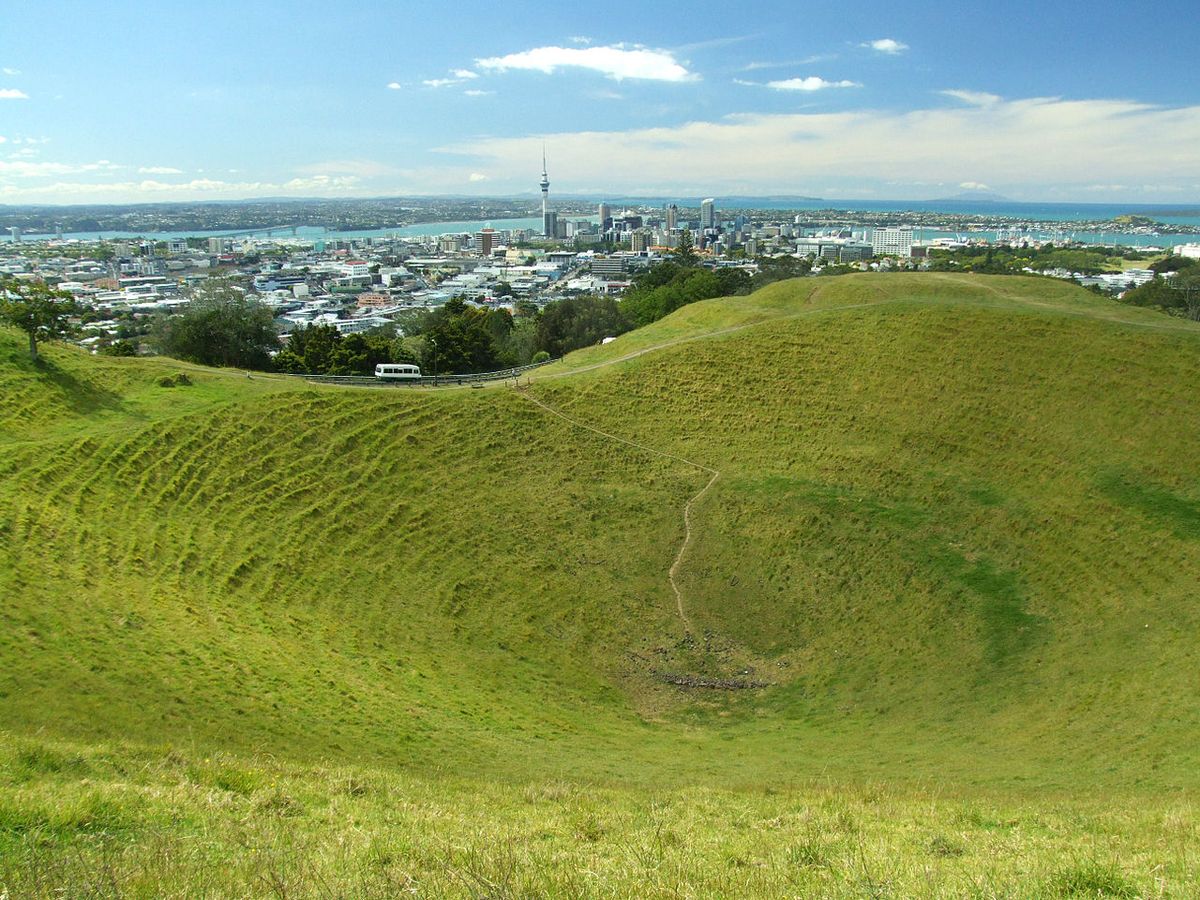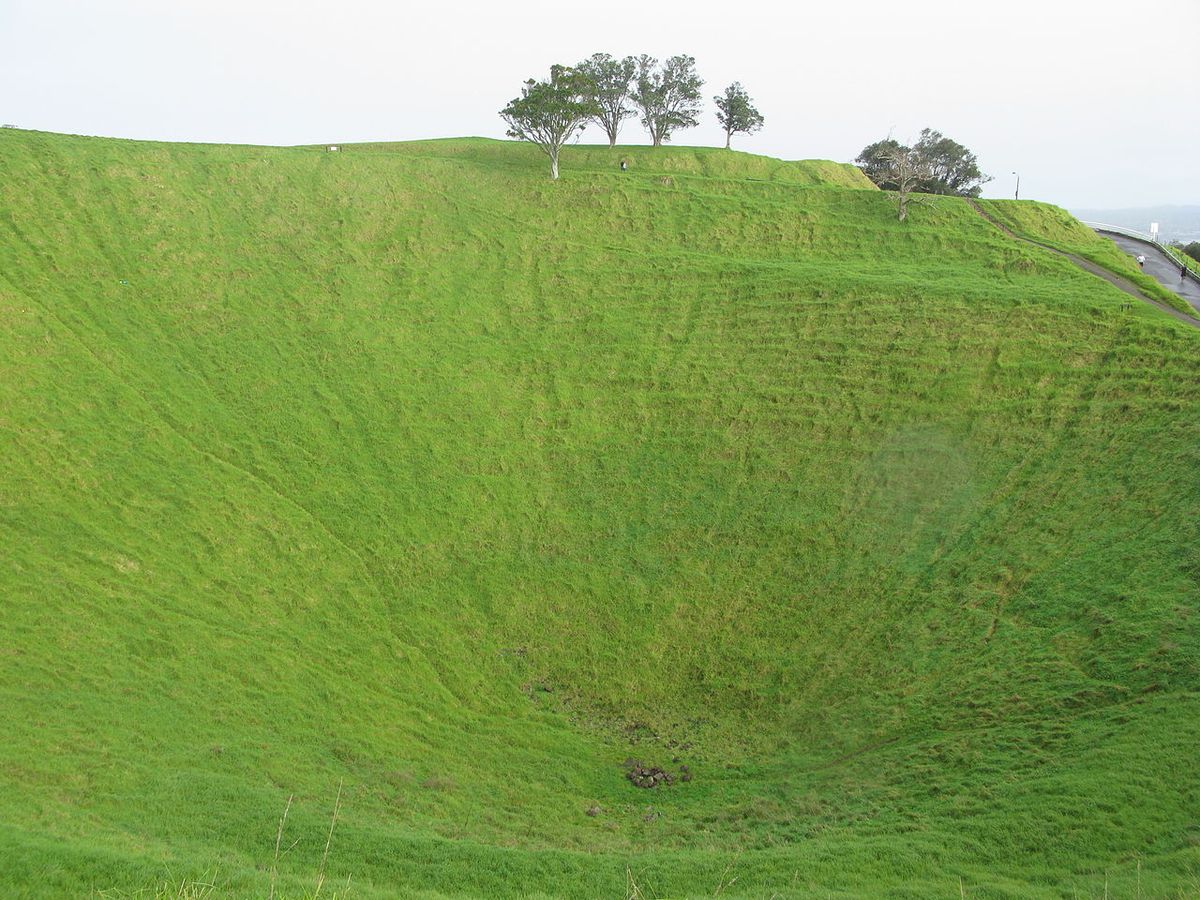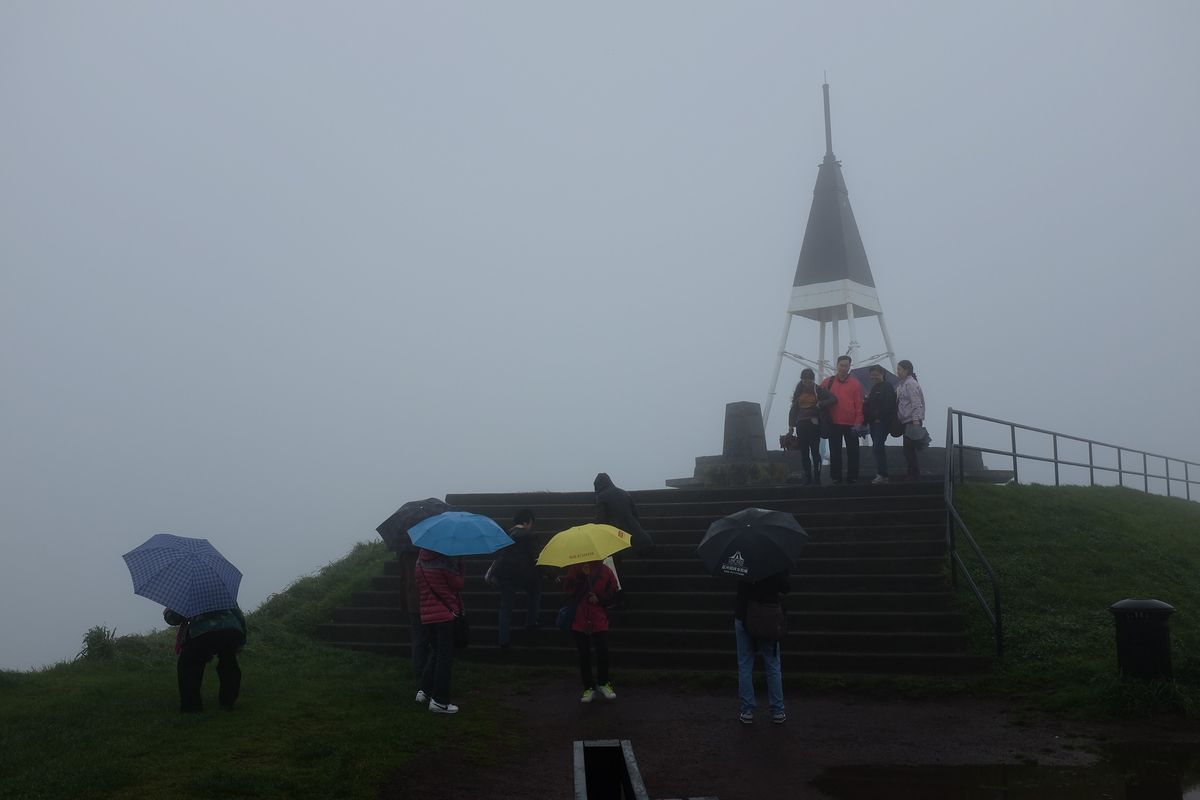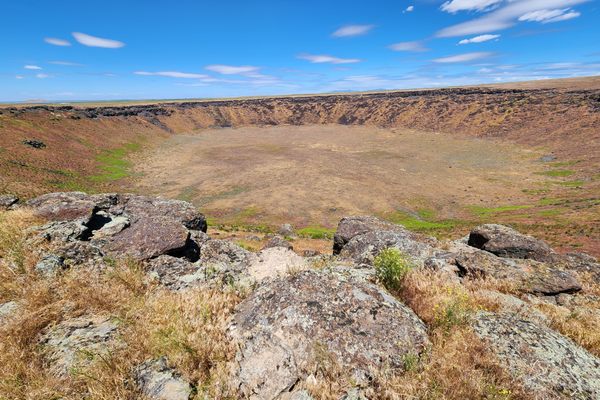About
At almost 650 feet high, the cone of this long-dormant volcano is the highest natural point in the Auckland region. But that's not its only claim to fame—the stone observation platform at its peak was built with the help of an elephant.
The volcano's last eruption is thought to have been around 28,000 years ago. It spewed lava from three different cones to form the land upon which Auckland now sits. The peak, which goes by both its Māori and English names, is the highest point in the city, making it a popular destination. The 160-foot-deep crater Te Ipu-a-Mataaho ("The Bowl of Mataaho") is named after a deity said to live inside it, guarding the secrets of the earth.
In the late 19th century, much of one side of the mountain was quarried to build some of Auckland's earliest homes, prisons and other structures in the region, as well as the platform atop the peak. The laborers were mostly Māori men and prisoners, but one was a royal elephant.
Prince Alfred, the Duke of Edinburgh, was to finish his 1870s tour of the Royal Navy in Auckland. When passing through Nepal, the prince was gifted a three-year-old elephant by Sir Jung Bahadoor. Alfred named the elephant Tom, and took him along to New Zealand, much to the delight of Auckland residents who had likely never seen such a creature before.
Over the course of the prince's stay the elephant was kept in the royal barracks. But his strength and size weren't put to waste. While on board the ship from Sri Lanka to New Zealand, Tom carried 300 tons of coal across the vessel, much to the delight of the sailors. He was put to similar work on Mt. Eden's platform, hauling heavy basalt up the mountainside. The royal pachyderm was rewarded for his labor with candy and beer.
Today, the mountaintop platform remains one of Auckland's most popular tourist sites for its beautiful views of the city and surrounding area. Tom's life didn't last quite so long, but his memory still remains. He did not stay in New Zealand, but relocated to several British zoos before his death in 1882 at the Dublin Zoo. The zoo held onto his remains, and in 2010 they were purchased by the Trinity College Zoological Museum, where they are now on display.
Related Tags
Wild New Zealand: Exploring the North & South Islands
Stunning landscapes, unique wildlife, and rich Māori culture.
Book NowCommunity Contributors
Added By
Published
January 12, 2017




































































